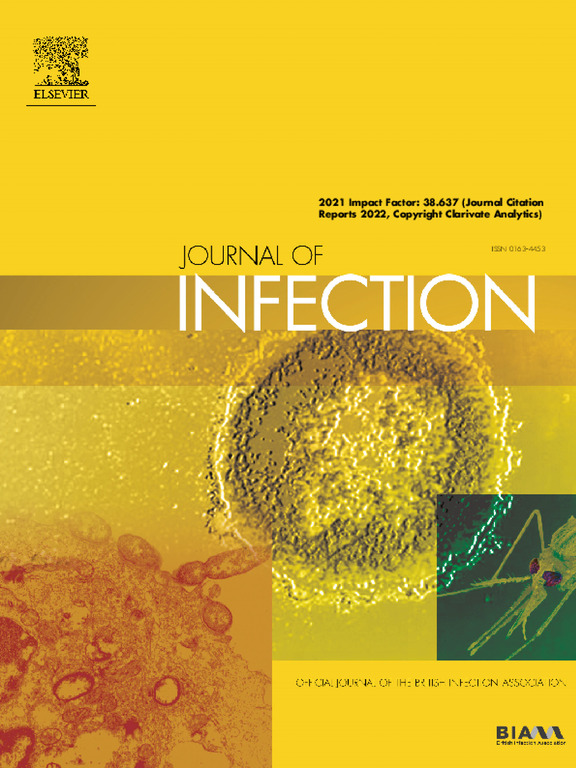Clinical epidemiological characteristics of hospitalized pediatric viral community-acquired pneumonia in China
IF 14.3
1区 医学
Q1 INFECTIOUS DISEASES
引用次数: 0
Abstract
Background
Community acquired pneumonia (CAP) is a major global public health concern among children, with viral pathogens playing a significant role. Despite this, national multicenter studies on viral community acquired pneumonia (VCAP) in hospitalized children remain scarce. The study employed a multicenter approach to investigate the clinical epidemiology and burden of VCAP in hospitalized children across China.
Method
Data were extracted from the face sheets of discharge medical records (FSMRs) within the FuTang Update Medical Records (FUTURE) database, spanning 2016 to 2022. VCAP cases from 33 tertiary children's hospitals were identified and analyzed. Epidemiological characteristics, length of stay (LOS), and hospitalization costs were compared using appropriate statistical methods.
Results
Between January 2016 to December 2022, 72,905 hospitalized cases of CAP with confirmed diagnoses of viral pathogens were documented, accounting 4.07% of all CAP cases (72,905/1791,343). Respiratory syncytial virus (RSV) was the leading cause, responsible for 57.21% of cases, followed by adenovirus, parainfluenza virus, human rhinovirus and influenza virus. The male-to-female ratio was 1.69:1, and infants under 1 year of age represented 59.84% of hospitalizations. Temporal trends showed an increase in VCAP hospitalizations from 2016 to 2019, a decline in 2020, followed by a resurgence in 2021 and 2022. Seasonally, the majority of cases occurred during winter (December to February, 41.67%), while summer (June to August) had the lowest proportion (16.80%). A total of 40 deaths were reported, representing a mortality rate of 0.05%. The median LOS was 7 days, with a median hospitalization cost of 907.38 USD.
Conclusions
Although the proportion of CAP cases in children with confirmed viral pathogen in China is relatively low, VCAP remains a significant health burden for children. RSV is the most prevalent viral cause of VCAP, particularly affecting infants under 1 year of age, while adenovirus is associated with the highest mortality, longest LOS, and highest hospitalization costs. VCAP cases peak during the winter months. While the prognosis is generally favorable, the disease continues to pose a considerable public health challenge.
中国住院儿童病毒性社区获得性肺炎临床流行病学特征
社区获得性肺炎(CAP)是全球主要的儿童公共卫生问题,病毒性病原体在其中起着重要作用。尽管如此,关于住院儿童病毒性社区获得性肺炎(VCAP)的全国性多中心研究仍然很少。本研究采用多中心方法调查中国住院儿童VCAP的临床流行病学和负担。方法数据提取自2016年至2022年FuTang Update medical records (FUTURE)数据库中出院病历(fsmr)的人脸表。对33家三级儿童医院的VCAP病例进行分析。采用适当的统计方法比较流行病学特征、住院时间(LOS)和住院费用。结果2016年1月至2022年12月,确诊为病毒性病原体的CAP住院病例72905例,占CAP总病例的4.07%(72905 /1791,343)。呼吸道合胞病毒(RSV)占57.21%,其次是腺病毒、副流感病毒、人鼻病毒和流感病毒。男女比例为1.69:1,1岁以下婴儿占住院人数的59.84%。时间趋势显示,从2016年到2019年,VCAP住院人数增加,2020年下降,随后在2021年和2022年回升。季节上,冬季(12 ~ 2月)发病最多,占41.67%,夏季(6 ~ 8月)发病比例最低,占16.80%。总共报告了40例死亡,死亡率为0.05%。平均生存期为7天,平均住院费用为907.38美元。结论虽然中国确诊的病毒性病原体儿童中CAP病例的比例相对较低,但VCAP仍然是儿童的重大健康负担。RSV是引起VCAP最常见的病毒,尤其影响1岁以下的婴儿,而腺病毒与最高死亡率、最长的LOS和最高的住院费用相关。VCAP病例在冬季达到高峰。虽然预后普遍良好,但该疾病继续构成相当大的公共卫生挑战。
本文章由计算机程序翻译,如有差异,请以英文原文为准。
求助全文
约1分钟内获得全文
求助全文
来源期刊

Journal of Infection
医学-传染病学
CiteScore
45.90
自引率
3.20%
发文量
475
审稿时长
16 days
期刊介绍:
The Journal of Infection publishes original papers on all aspects of infection - clinical, microbiological and epidemiological. The Journal seeks to bring together knowledge from all specialties involved in infection research and clinical practice, and present the best work in the ever-changing field of infection.
Each issue brings you Editorials that describe current or controversial topics of interest, high quality Reviews to keep you in touch with the latest developments in specific fields of interest, an Epidemiology section reporting studies in the hospital and the general community, and a lively correspondence section.
 求助内容:
求助内容: 应助结果提醒方式:
应助结果提醒方式:


